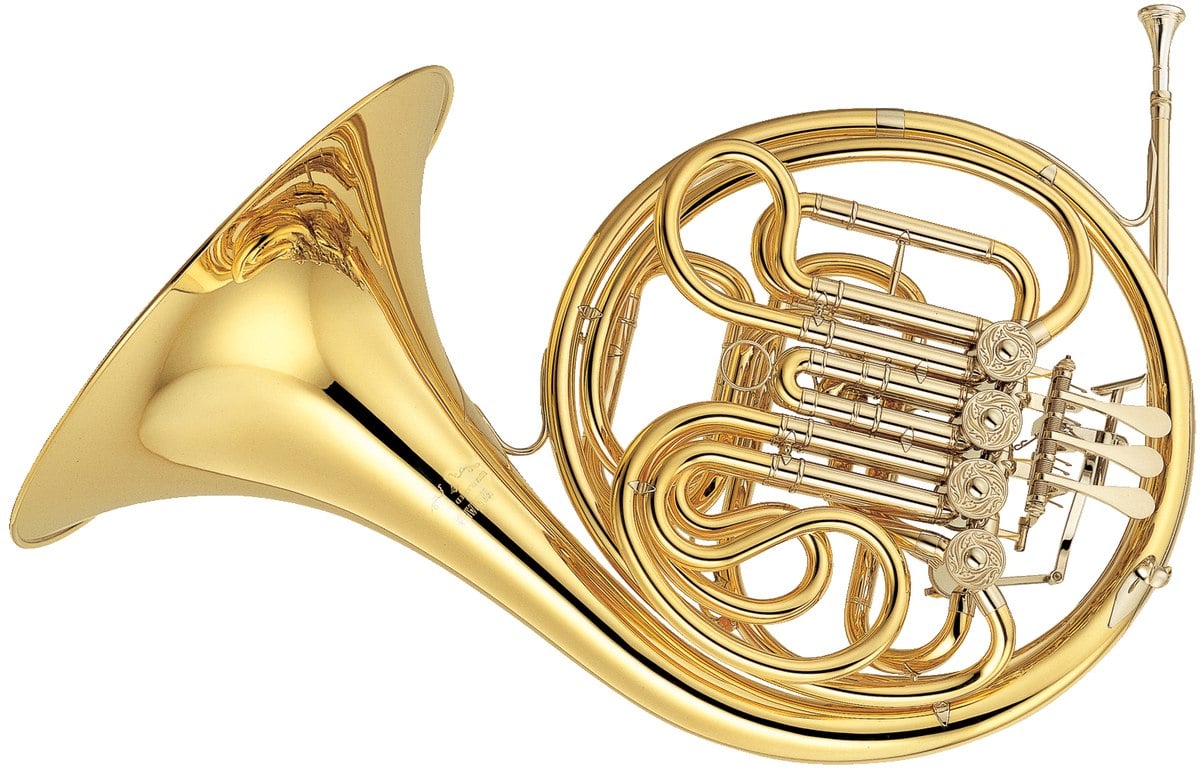The Anatomy of a French Horn (5/23/2024)
The French horn, with its majestic sound and captivating presence, is a cornerstone of orchestral and brass ensemble music. Let's embark on a voyage through the inner workings of this remarkable instrument, unraveling its intricate anatomy and exploring the features that make it truly unique.

Mouthpiece: Like all brass instruments, the journey of sound begins with the mouthpiece. It's the player's interface with the instrument, where air is blown to create vibrations. The shape and size of the mouthpiece can greatly influence the tone and timbre of the instrument, allowing for a personalized sound.
Lead Pipe: The lead pipe serves as the conduit for the airflow from the mouthpiece into the main tubing of the French horn. Its design influences the instrument's response and resonance, contributing to the player's control and articulation. A well-crafted lead pipe can enhance the instrument's tonal characteristics and playability.
Key Levers: French horns are equipped with key levers, also known as valve levers or valve paddles, which are used to engage the instrument's rotors. These levers are pressed by the player's fingers to redirect the airflow through different lengths of tubing, producing different pitches. The placement and ergonomics of the key levers are carefully designed to facilitate smooth, efficient valve operation.
Rotors: At the heart of the French horn's sound production are its rotors, which are responsible for changing the pitch of the notes. There are two types of rotor mechanisms: string linkages and mechanical linkages. String linkages use strings or cables to connect the key levers to the rotors, while mechanical linkages use gears or levers. Each system has its own unique feel and response, with some players preferring the smoothness of string linkages and others favoring the precision of mechanical linkages.
Tuning Slide: The tuning slide allows players to make fine adjustments to the pitch of the instrument. By extending or retracting the tuning slide, players can ensure that the French horn is perfectly in tune with other instruments in the ensemble. It's a small but crucial component that contributes to the instrument's overall intonation and blend.
Bell: The bell of the French horn is where the sound is projected outward, giving the instrument its characteristic warmth and resonance. Its flared shape enhances the instrument's tonal projection, allowing for rich, expressive tones that can fill even the largest concert halls.
The Difference Between Single Horn and Double Horn: One notable distinction in French horn anatomy is between single horns and double horns. Single horns have a simpler design, with only one set of tubing and one set of key levers. Double horns, on the other hand, have an additional set of tubing and key levers, activated by a thumb lever near the player's hand. This allows for greater flexibility in pitch and tonal color, making double horns a preferred choice for many professional players.
Understanding the anatomy of the French horn offers a glimpse into the craftsmanship and engineering behind this beloved instrument. From the mouthpiece to the bell, each component plays a vital role in shaping its distinctive sound and expressive capabilities, making it an essential voice in any musical ensemble.
Ready to Get Started?
Here's a Youtube Playlist with your first lessons, including how to assemble and hold your instrument!


